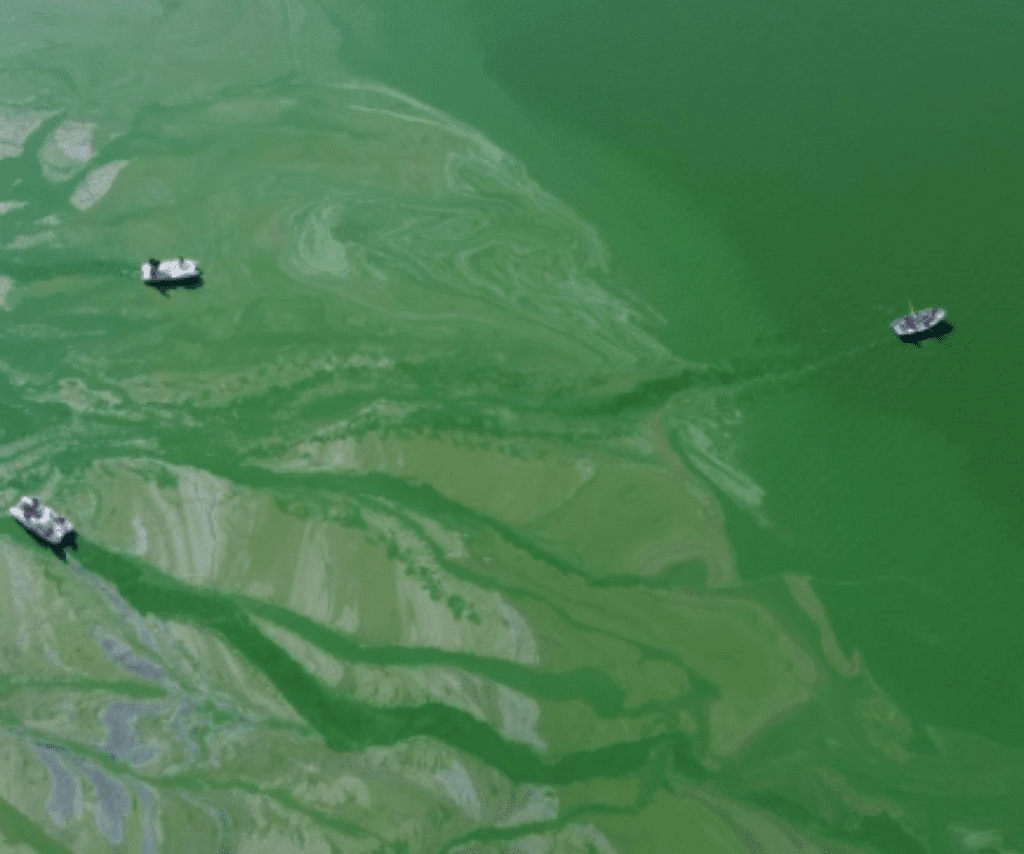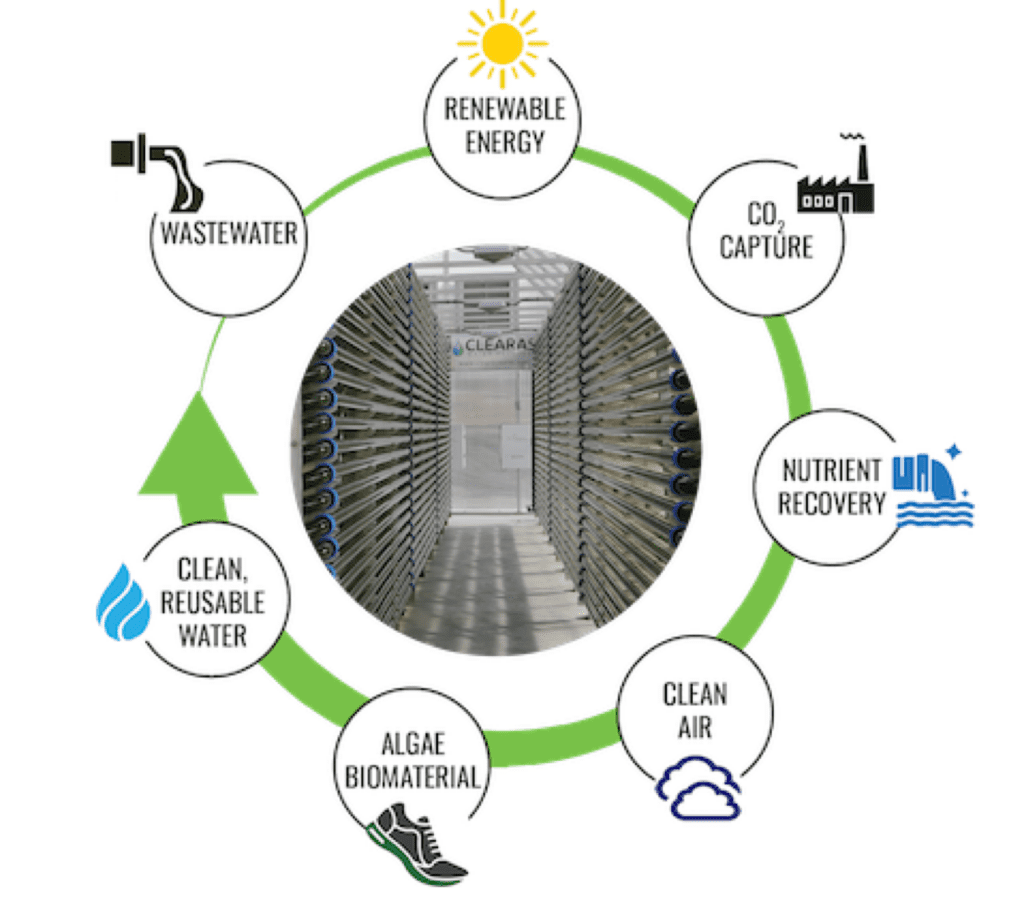Daniel Salzler No. 1066
EnviroInsight.org 4 Items September 4, 2020
Feel Free To Pass This Along To Others
If your watershed is doing something you would like others to know about, or you know of something others can benefit from, let me know and I will place it in this Information newsletter.
If you want to be removed from the distribution list, please let me know. Please note that all meetings listed are open.
Enhance your viewing by downloading the pdf file to view photos, etc. The attached is all about improving life in the watershed.
1. Resource, Recovery, Revelation. The village of Roberts, Wisconsin is demonstrating to the rest of us, how to leveraged microalge to address phosphorus and nitrogen loads and transition to a resource recovery facility.

70% of U.S. rivers, lakes, reservoirs and estuaries do not meet minimum U.S. EPA water quality standards. A leading cause of this impairment is excess nutrients, such as nitrogen and phosphorus, due to agricultural runoff and industrial and municipal wastewater discharge. As an integral part of improving biodiversity, wastewater facilities have been regulated to play a major role in reducing these pollutants from entering waterways.
Historically, wastewater design has been a linear, treatment-based approach demanding high energy and chemical consumption while generating substantial and costly waste residuals. The old adage was, “We collect it, we treat it and we dispose of it.”
Through the development of solutions and technology, the opportunity to transition away from linear-based treatment and toward sustainable resource recovery is now available. Wastewater treatment facilities can solve the nutrient problem while alleviating current environmental, social and economic pressures.

One such solution is Advanced Biological Nutrient Recovery (ABNR), invented by Clearas Water Recovery. ABNR turns the problem (algae blooms) into the solution (nutrient recovery).
For example, phosphorus must be removed to nearly non-detect levels. In side-by-side trials, ABNR consistently outperformed chemical alternatives to meet low level phosphorus (<0.075 mg/L) and ammonia (<1.0 mg/L) requirements. Just as important, this solution enabled the village to transition its wastewater treatment plant to a resource recovery facility with a life cycle cost advantage over traditional treatment methods.
The solution uses microalgae to act as bio-filters and to recover phosphorus and nitrogen as well as capture carbon dioxide in an optimized and easily controlled environment. The algae, which leverage sunlight, grow aggressively within a vertical array of photobioreactors and are constantly harvested (wasted) to maintain a balance between the amount of food (nutrients) and mass (algae) in the system. Following the separation from clean reusable water, the excess algae (plant-based material) then becomes a valuable biomaterial that provides a recurring income stream to the municipality.
Once harvested, this biomaterial is further processed based on buyer specifications. Clearas markets, sells and distributes the biomaterial into diversified markets with growing demand. Applications include bioplastics and foams, cosmetics, protein feed and food supplements, soil amendment and specialty chemicals. In the case for the village of Roberts, the biomaterial is dried and sold to a strategic partner, Algix, which converts the algae into a thermoplastic for use in shoe soles. Some of these customers include Adidas, Billabong, Dr. Scholls, Merrell and Volcom. To read more about this process, go online to wwdmag.com and click on current issue.
2. Protecting Your Facility And Your Employees From Dust Explosions. If your facility makes, produces, destroys, cleans, thrashes, grinds or mixes some sort of material, one of the end products will be dust. The dust, even in small amounts will accumulate of ledges, walls and floors. Sweeping the dust just adds more dust into the air.
If the product allows for it, a light mist of water may be applied to f]bring the dust to the floor and by reducing its flammability.
Dust explosions occur when combustible dust is present in the air and there is an ignition source and ample oxygen present.
In situations where water cannot be applied, and dust is filling air space of an interior room, industrial vacuums are needed to extract the dust from the room.
For there to be a dust explosion, there must be:
Fuel (combustible dust)
Ignition Source (heat)
Oxygen levels
Dispersion of Dust Particles into the air
Confinement of Dust Particles (inside a building, a vessel, or area)
The safest method of evacuating dust is through the utilization of air operated vacuums. These vacuums use no electricity (no electrical sparks) but use static conductive hoses, filters, and casters. A grounding lug and strap that travels from the vacuum head to the 55-gallon drum eliminates the potential for arcing.
In summary, the best way to prevent dust explosions is to improve on housekeeping. Read more at oshonloine.com September edition.
3. The History Of Labor Day. Labor Day 2020 will occur on Monday, September 7. Labor Day pays tribute to the contributions and achievements of American workers and is traditionally observed on the first Monday in September. It was created by the labor movement in the late 19th century and became a federal holiday in 1894. Labor Day weekend also symbolizes the end of summer for many Americans, and is celebrated with parties, street parades.
Labor Day, an annual celebration of workers and their achievements, originated during one of American labor history’s most dismal chapters.
In the late 1800s, at the height of the Industrial Revolution in the United States, the average American worked 12-hour days and seven-day weeks in order to eke out a basic living. Despite restrictions in some states, children as young as 5 or 6 toiled in mills, factories and mines across the country, earning a fraction of their adult counterparts’ wages.
People of all ages, particularly the very poor and recent immigrants, often faced extremely unsafe working conditions, with insufficient access to fresh air, sanitary facilities and breaks.
As manufacturing increasingly supplanted agriculture as the wellspring of American employment, labor unions, which had first appeared in the late 18th century, grew more prominent and vocal. They began organizing strikes and rallies to protest poor conditions and compel employers to renegotiate hours and pay.
Many of these events turned violent during this period, including the infamous Haymarket Riot of 1886, in which several Chicago policemen and workers were killed. Others gave rise to longstanding traditions: On September 5, 1882, 10,000 workers took unpaid time off to march from City Hall to Union Square in New York City, holding the first Labor Day parade in U.S. history.
The idea of a “workingmen’s holiday,” celebrated on the first Monday in September, caught on in other industrial centers across the country, and many states passed legislation recognizing it. Congress would not legalize the holiday until 12 years later, when a watershed moment in American labor history brought workers’ rights squarely into the public’s view. On May 11, 1894, employees of the Pullman Palace Car Company in Chicago went on strike to protest wage cuts and the firing of union representatives.
On June 26, the American Railroad Union, led by Eugene V. Debs, called for a boycott of all Pullman railway cars, crippling railroad traffic nationwide. To break the Pullman strike, the federal government dispatched troops to Chicago, unleashing a wave of riots that resulted in the deaths of more than a dozen workers.

Who Created Labor Day?
In the wake of this massive unrest and in an attempt to repair ties with American workers, Congress passed an act making Labor Day a legal holiday in the District of Columbia and the territories. On June 28, 1894, President Grover Cleveland signed it into law. More than a century later, the true founder of Labor Day has yet to be identified.
Many credit Peter J. McGuire, cofounder of the American Federation of Labor, while others have suggested that Matthew Maguire, a secretary of the Central Labor Union, first proposed the holiday.
Labor Day is still celebrated in cities and towns across the United States with parades, picnics, barbecues, fireworks displays and other public gatherings. For many Americans, particularly children and young adults, it represents the end of the summer and the start of the back-to-school season. Source: History.com
4. Official End To Summer. Labor Day is often thought to be the end of summer when actually, summer ends and fall begins on the Autumnal equinox, September 22, 2020.
Unofficially, “Summer 2020” has been a record breaker in many ways. Hottest June ever. Hottest July ever. Hottest August ever. Phoenix has also experienced a record number of days at 110 degrees or higher this year. That count stands at 50 days (53 days recorded at the editor’s home in Glendale), which completely shatters the previous record of 33 days set back in 2011. We could still add more to this record tally, too. Thirteen of those days reached 115˚ or more.

It’s not just the days that have been hotter this year — overnight lows have also set records. There have been 28 days with lows in the 90s this year, shattering the previous record of 15 days backin 2013.
The average temperature of August, considering all of the lows and all of the high temperatures averaged out to 108.5˚ – the hottest month every recorded.
The average August night time low temperatures also at a record with 99.1.Rainfall has also been scarce in 2020. While some areas East of Phoenix, in the Tucson and Mountain areas have seen periodic rainfalls and the editors back yard rain gauge measured 1/16” of rain over a time period of over 170 days. Source: abc15 Arizona Iris Hermosillo and Editor.
September is looking like it will be like the months of summer – hot and dry. Can someone tell me, “What is a Monsoon?
Copyright: EnviroInsight.org 2020
